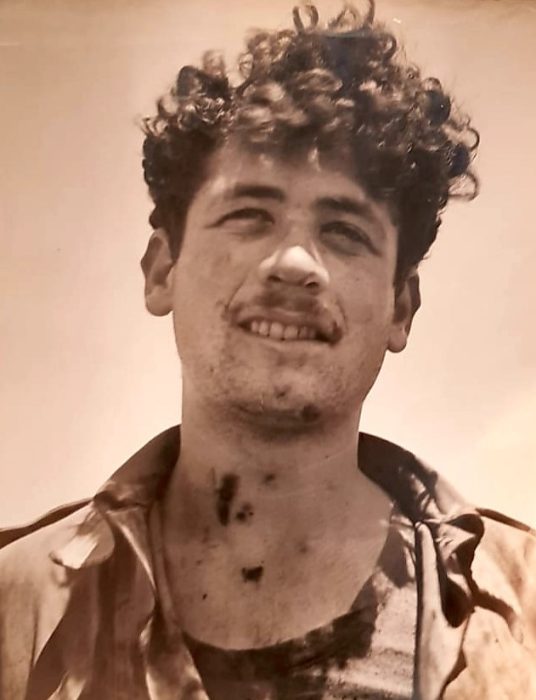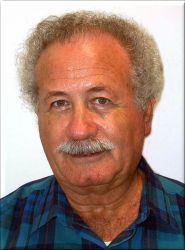About his years working in the auto repair shop on Kibbutz Mahanayim, through his sabbaticals at NASA’s research center, to the development of oxygen tanks for fighter pilots – Prof. Assa Rotem used to say that he got to work in his hobby and did so while making a significant contribution to the composite materials industry. His family and friends also miss his deft hands that could disassemble and assemble anything
Assa Rotem was born in Haifa in 1933 to socialist Polish-born parents. His mother was one of the founders of the Working Mothers Association, Secretary of the Association of Nurses and Social Workers of the Haifa Workers’ Council, and received the City Honor Award. Therefore, unlike many of his colleagues, Assa did not attend the Reali School but rather a school for workers’ children, from where he continued to the Professional High School for Certified Practical Engineers and Technicians. After his military service in the Nahal, he went to Kibbutz Mahanayim. At the age of 19, he was appointed treasurer of the kibbutz, and the rest of the time he worked in the auto repair shop. It was there, among the parts of engines and pistons, that the seeds were apparently planted for his extensive and scientific engineering career which, as will be demonstrated later, was always characterized by a close connection with industry and an affection for screws and tools throughout his entire life.
He began his studies at the Technion when he was already a father to a one year old. “His mother, a socialist, was not so happy when he started studying and encouraged him to stay on the kibbutz. He was the eldest in the course at the Technion,” says his wife, Zivi.
After a short work stint at Rafael, Assa returned to the Technion and completed his master’s and PhD in composite materials, a subject that interested him at the time, the late 60s and early 70s. “Assa didn’t follow the usual path like most of us who started studying right after our military service,” adds his colleague Prof. Jacob Lifshitz. “He started later in life and finished his bachelor’s degree in 1963, at the age of 30. When I returned to the Faculty from my studies in the United States, he was a master’s student and we studied applied mechanics together, even though he was three years older than me. He was fascinated with the approach Prof. Sol Bodner and I had brought from the United States, which combined the traditional metallurgy that had characterized the Faculty until then with research and theory in the American tradition. At that time, Prof. Bodner established the Materials Mechanics Laboratory. Assa did part of his thesis there and went on to earn his doctorate.” Prof. Rotem did his postdoctoral research at the Illinois Institute of Technology (IIT) with Prof. Larry Brautman.
After completing his postdoc in Chicago, Assa returned to the Faculty of Mechanical Engineering, which he never left except for sabbaticals, and immersed himself in his research of composite materials. “The work fulfilled him immensely. He really loved the Technion and would always tell me he was lucky to have a job that was his hobby,” his wife says. “He wasn’t very talkative about work. When I asked him what he was doing, he always replied that he was writing an article or editing a book. He didn’t hold administrative positions. He never cared about titles or respect. I never heard him say the word professor, he always introduced himself as Assa Rotem. I wrote Professor on his tombstone, so people would know who was there. I don’t think he would have been happy if he knew.”
NASA’s Space Camera

During one of his sabbaticals, Prof. Rotem, already a faculty member, went to NASA Ames – NASA’s research center in Palo Alto, California, to work with Prof. Nelson. “The Americans had sent a huge camera into space and encountered problems because of the difficult conditions. The camera’s body burned from the heat of the sun and froze when it was dark. They were looking for a material that would not become deformed in the extreme conditions in space and during the flight. At that time, Assa was investigating the behavior of materials under conditions of load, pressure, stretching, fatigue, etc. He published several papers that made waves in the US and enabled NASA to design suitable materials, some of which are still used today by companies like Boeing, for example,” Lifshitz says.
During his sabbaticals, the family remembers the wonderful trips they took with their children. “Assa loved to travel. On one of our first trips to the US, we traveled from coast to coast. We also traveled endlessly in Israel. Immediately after the Six-Day War, with the help of an army officer friend, we stayed in tents in Ras Muhammad.” His colleague Prof. Lifshitz also remembers joint trips to professional conferences.
Over the years, the field of composite materials developed and found its way into new industries. The ability to design very strong lightweight surfaces at relatively low cost made these materials attractive for a large variety of applications; what started as a focus of interest in aviation evolved into many other directions. Today, these materials make up a substantial share of the materials used in every field. Prof. Rotem, who excelled in maintaining close ties with the industry, the army, and the navy, made a substantial contribution to the scientific backing to accelerated industrial development in this field. Among the projects in which he was directly involved were the development of light oxygen tanks for pilots in fighter aircraft. Another area he worked in for years was the use of composite materials in orthopedics, for example, carbon implants for hip replacement, which he developed with doctors and orthopedic surgeons in Haifa hospitals.
Building an Industry from Theory
“The industry is always looking for people who can look ahead, and Assa was one of the most prominent people in the field. We usually teach theories. Assa was one of the few who could also teach how to build from industry theories. He was a technical man at his core and was often approached by factories for help. I greatly appreciated his knowledge and the good connection he forged between science and industry,” Prof. Lifshitz said of his colleague.
“Assa was a charming, quiet, calm and modest man, but when he had to, he knew how to express his opinions authoritatively,” says his widow Zivi. The interview in his memory was conducted before the end of the 30 days marking his passing, and in the conversation with his widow, her great pain was evident. “He was a wonderful husband, father and grandfather. He didn’t bother anyone, did what was best for himself, and that was his job. He was very family oriented. He didn’t show it because he was so quiet, but the children adored him. Two of our sons, the eldest and the youngest, also studied at Professional High School for Certified Practical Engineers and Technicians and at the Technion and completed degrees in electrical engineering. Our middle son studied business administration. We lived a wonderful life together. He was the love of my life and I’m heartbroken.”







